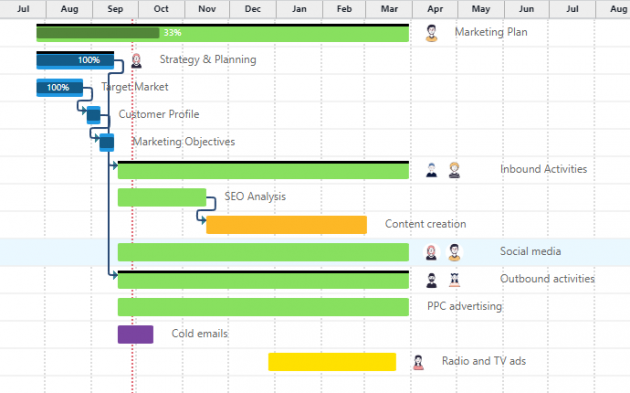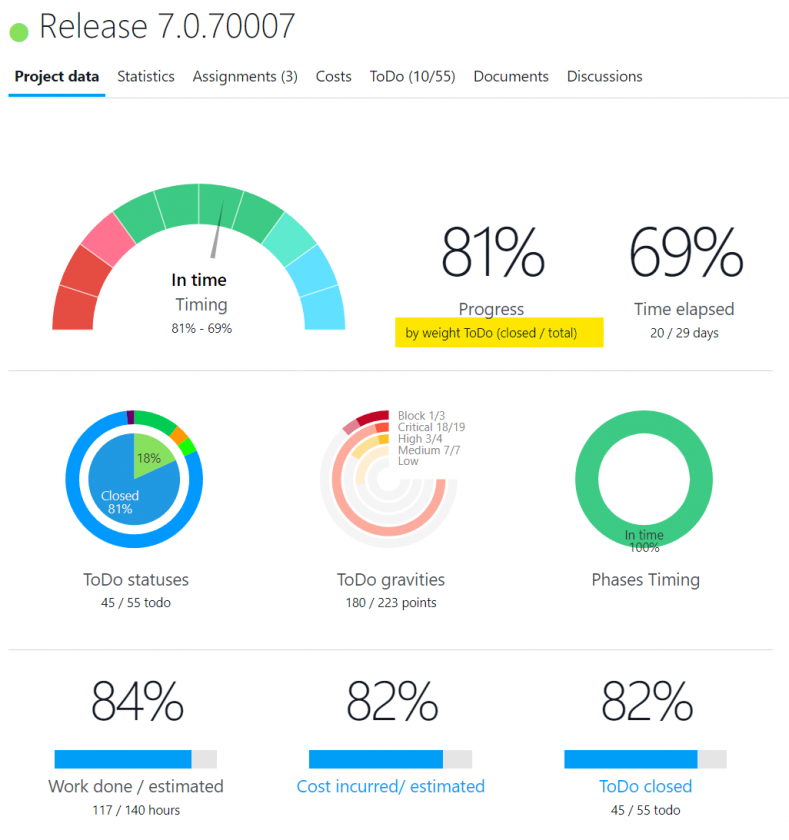In project management, time is as valuable a resource as budget or technical skills. Meeting deadlines is one of the most crucial challenges of modern project management. Whether for IT, marketing, or engineering projects, meeting set deadlines directly impacts the quality of deliverables and customer satisfaction.
Let’s take a look at 5 effective strategies for true, timely, and sustainable project scheduling.
CONTENT
5 Strategies for meeting deadlines in project scheduling
1. Begin with extensive planning
The first step in meeting deadlines is to build a solid and structured project schedule. This does not mean merely listing the activities to be carried out, but rather thoroughly understanding their content, dependencies, and priorities.
Each project must be broken down into its constituent activities, estimating for each:
- expected duration,
- resources involved,
- time or technical constraints.
Effective planning can be achieved through the Work Breakdown Structure, which helps fragment the project into smaller, manageable, and assignable units. This approach provides improved clarity, facilitates communication with team members, and makes it easier to spot bottlenecks.
Supporting this structure, visual tools such as the Gantt chart are key: they visually represent the time sequence of activities, dependencies between them, and critical points.
In Twproject, the Gantt chart is interactive and dynamic: by changing a task, it automatically updates all dependencies, ensuring the project plan is always aligned with reality.

Lastly, also consider safety margins and review phases: project management is not a static process but rather a continuous balance between planning and adaptation.
Properly executed project planning can make the difference between a project that stays on schedule and one that fails early on. Therefore, devoting time and attention to this initial step must be a top priority.
2. Actively involve your team
In project management, nothing works without team member involvement. Getting them on board during the project planning phase boosts the accuracy of estimates and their commitment to objectives.
Responsibilities need to be clear and shared. Tasks can be distributed based on skills and availability, which helps avoid overloads that cause delays.
3. Monitor progress in real-time
After defining your project plan, your work is not over: the most delicate phase of the project management process begins: monitoring.
Even the best project planning can encounter unexpected events, which is why it is crucial to monitor progress consistently.
Twproject offers state-of-the-art features for real-time monitoring: customizable dashboards, dynamic Gantt charts, and notifications that help you follow the evolution of your project day by day. With these tools, any bottlenecks can be identified and resolved before they compromise the planned schedule.
A key element is the comparison between planned and actual data: knowing whether a task should already be completed or is late can be vital in taking timely action. This type of continuous monitoring increases the team’s responsiveness and enables the project manager to make informed and quick decisions.
Additionally, transparency about ongoing activities enhances collaboration among team members, who can view their own and others’ contributions within the project lifecycle in real-time. This operational alignment reduces misunderstandings, enhances communication, and maintains high motivation.
Finally, consider setting up automatic alerts for when tasks exceed time or budget thresholds, as these tools can also be a key part of a truly proactive project management system.

4. Properly allocate resources
Effective project management also, and most importantly, requires proper resource allocation. A viable project plan must be crafted by carefully considering who will do what, with what tools, and under what operating conditions.
Resources can be diverse:
- Human, that is, team members who perform tasks;
- Materials, such as tools, software, or supplies;
- Financial, that is, the budget available for each project phase.
Allocating resources arbitrarily or too optimistically can be detrimental, resulting in work overloads, slowdowns, team stress, and, inevitably, missed deadlines.
Therefore, it is critical to consider:
- la reale disponibilità delle persone (inclusi permessi, ferie o altri impegni)
- eventuali picchi di lavoro stagionali o ciclici
- le criticità ricorrenti emerse da progetti passati.
Twproject supports project management in this regard as well, providing a clear snapshot of occupied, free, or conflicting resources. Thanks to interactive views and dynamic filters, you can know at any time whether a resource is under-utilized or overloaded, preventing bottlenecks before they even emerge.
Another key factor is the link between the work breakdown structure and resource allocation: correctly splitting each task allows you to allocate it to the most appropriate person or team, thereby optimizing performance and keeping the schedule to a minimum.
Lastly, remember that good allocation must also be flexible. During the project life cycle, new needs or changes in workload may emerge. A system like Twproject can be the ideal tool for updating resource allocation in real-time while maintaining control of the project.
5. Adapt your plan throughout the life cycle
In the project management process, adaptability is as important as initial accuracy. The project life cycle should be treated as a dynamic, constantly evolving flow rather than a static sequence of predefined steps.
Even the best project planning, supported by an excellent Gantt chart and a robust work breakdown structure, can be challenged by unforeseen factors, such as changes in business priorities, sudden vacancies, technical difficulties, or shifts in customer requirements.
In these cases, the project plan must be revised in an agile manner. Ignoring delays or forcing the original plan only leads to a domino effect that jeopardizes the entire project. The solution? Take action now to reorganize each affected activity, assess new dependencies and resources needed, and update projected timelines.
Tools like Twproject offer the flexibility to do this in real-time. With visual task management, you can monitor progress and quickly adjust your direction, engaging team members and redistributing responsibilities without losing sight of the final goal.
Also, take into account the value of continuous feedback. Revising your plan based on information gathered along the way not only improves current execution but also helps refine future methodologies within your project management strategy.
Adaptation does not equate to error but to project maturity: the ability to course-correct is what sets a flexible and efficient team apart from a rigid and ineffective one.
Meeting deadlines is not just a matter of being on schedule but a measure of quality in project management. Investing in solid project planning, engaging team members, monitoring progress, and adapting throughout the project life cycle are actions that make a difference.
With tools such as Twproject, each activity can be managed in an integrated and flexible manner, ensuring on-time delivery and stakeholder satisfaction.




